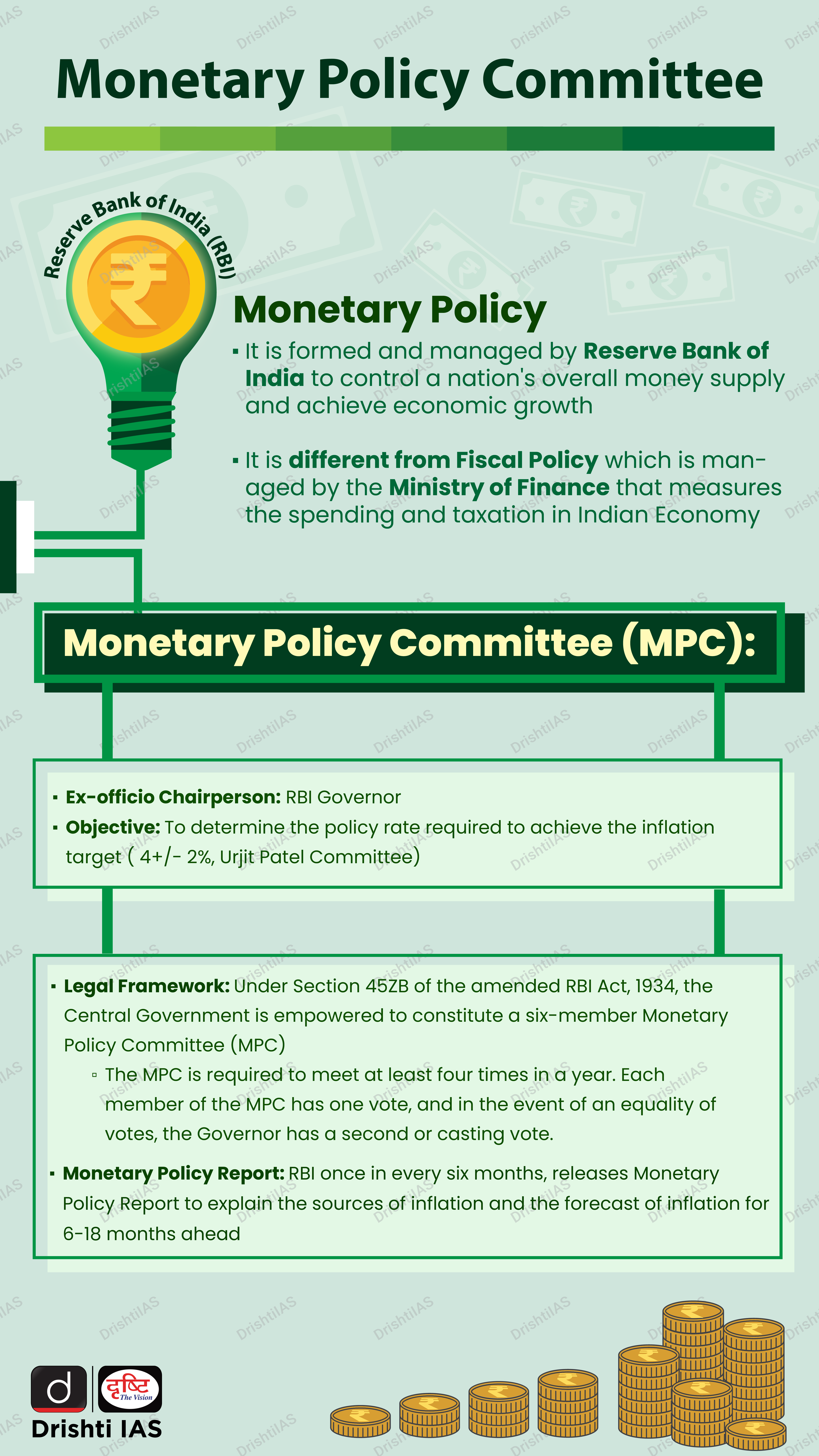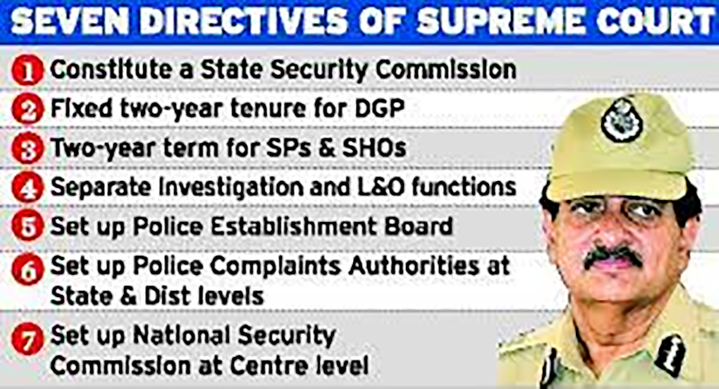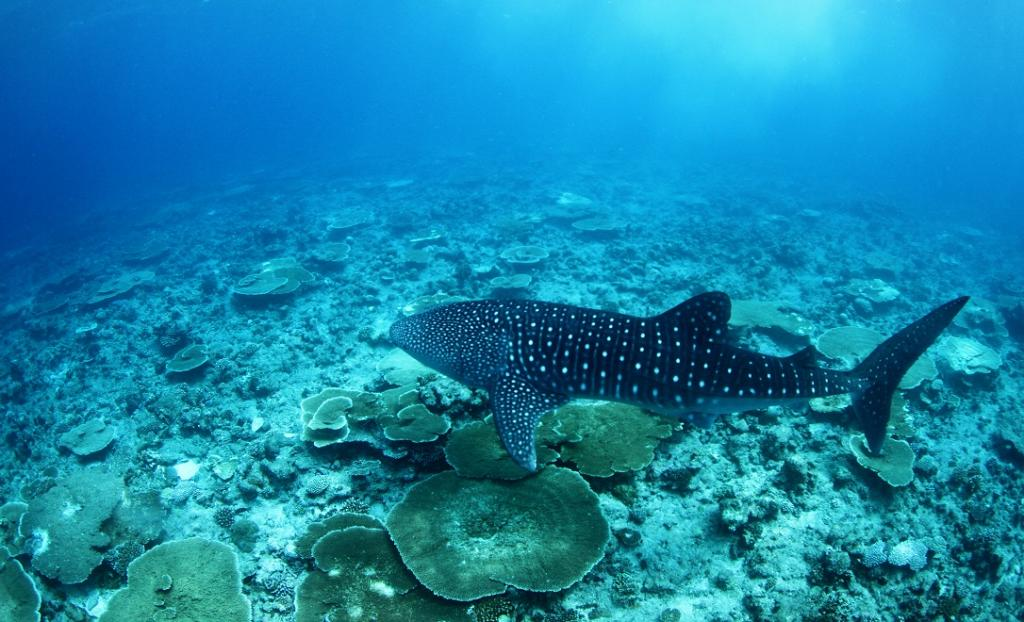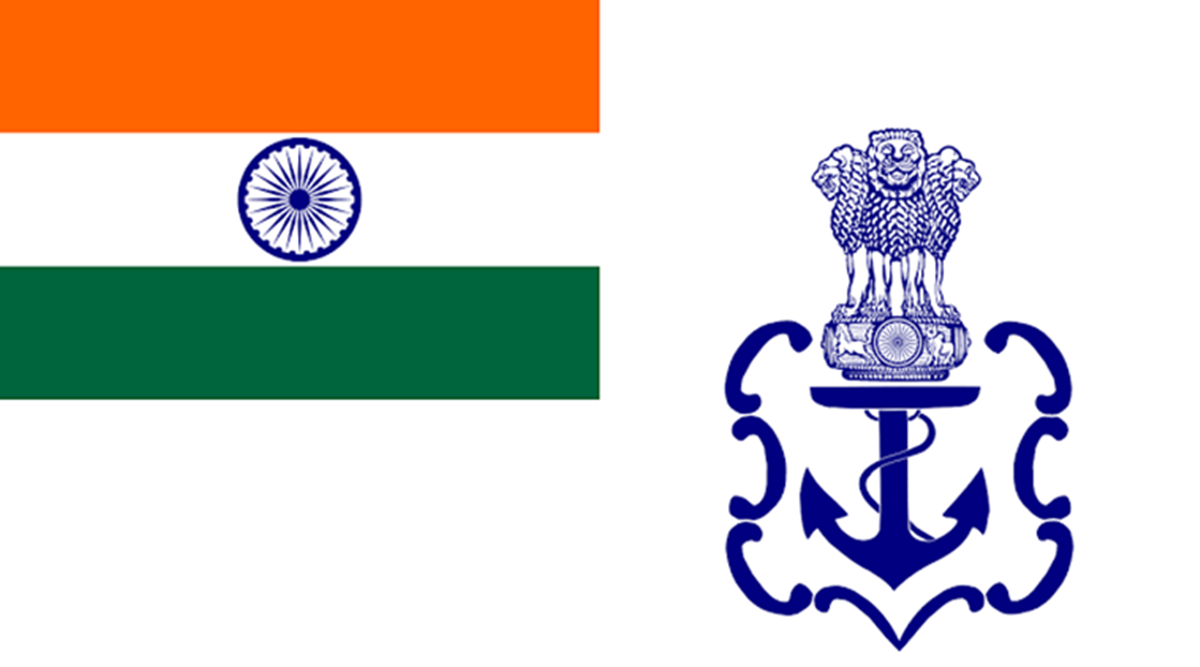Infographics
Governance
Narcotic Drugs and Psychotropic Substances Act, 1985
For Prelims: Marijuana, Narcotic Drugs and Psychoactive Substances, Bhang, Charas, ‘Nasha Mukt Bharat’, or Drug-Free India Campaign.
For Mains: Narcotic Drugs and Psychotropic Substances Act, 1985.
Why in News?
Recently, Karnataka High Court said that Bhang is nowhere referred to as a prohibited drink or prohibited drug as per Narcotic Drugs and Psychotropic Substances (NDPS) Act, 1985.
- The court relied on two earlier judgments, Madhukar vs the State of Maharashtra, 2002 and Arjun Singh vs State of Haryana, 2004, where the courts had ruled that bhang is not ganja, and is therefore not covered under the NDPS Act.
- Earlier, Thailand has legalized cultivating and possessing Marijuana but recreational use (Such as smoking) is still banned.
What is Bhang?
- About:
- Bhang is the edible preparation made from the leaves of the cannabis plant, often incorporated into drinks such as thandai and lassi, along with various foods.
- Bhang has been consumed in the Indian subcontinent for centuries, and is frequently consumed during the festivals of Holi and Mahashivratri.
- Law:
- The NDPS Act is the main legislation, enacted in 1985, that deals with drugs and their trafficking.
What are the Provisions of the NDPS Act?
- Defines Cannabis as a Narcotic Drug:
- The NDPS Act defines cannabis (hemp) as a narcotic drug based on the parts of the plant that come under its purview. The Act lists these parts as:
- Charas: The separated resin, in whatever form, whether crude or purified, obtained from the cannabis plant and also includes concentrated preparation and resin known as hashish oil or liquid hashish.
- Ganja: The flowering or fruiting tops of the cannabis plant (excluding the seeds and leaves when not accompanied by the tops), by whatever name they are known or designated.
- Any mixture, with or without any neutral material, of any of the above forms of cannabis or any drink prepared therefrom.
- The Act, in its definition, excludes seeds and leaves “when not accompanied by the tops”.
- Bhang is not mentioned in the NDPS Act.
- The NDPS Act defines cannabis (hemp) as a narcotic drug based on the parts of the plant that come under its purview. The Act lists these parts as:
- Punishment:
- Section 20 of the NDPS Act lays out the punishment for the production, manufacture, sale, purchase, import and inter-state export of cannabis, as defined in the Act. The prescribed punishment is based on the amount of drugs seized.
- It also provides for death penalty in some cases where a person is a repeat offender.
What is the State of Crime under NDPS Act?
- Punjab topped the list of crime rate as per the National Crime Records Bureau (NCRB) recent data for 2021.
- Punjab recorded 32.8% crime rate in 2021, which was the highest in the country.
- Himachal Pradesh ended second, notching a crime rate of 20.8% followed by Arunachal Pradesh that reported NDPS Act crime rate of 17.2%, followed by Kerala (16%).
- The lowest crime rate under NDPS Act in 2021 was reported from UT Dadar and Nagar Haveli and Daman and Diu (0.5%), followed by the states of Gujarat (0.7%) and Bihar (1.2%).
What are the Initiatives to Tackle Drug Addiction?
- The Narco-Coordination Centre (NCORD) was constituted in 2016 and the scheme of “Financial Assistance to States for Narcotics Control” was revived.
- Seizure Information Management System will create a complete online database of drug offences and offenders.
- National Drug Abuse Survey to measure trends of drug abuse in India through the Ministry of Social Justice & Empowerment with the help of National Drug Dependence Treatment Centre of AIIMS.
- Project Sunrise: It was launched by the Ministry of Health and Family Welfare in 2016, to tackle the rising HIV prevalence in north-eastern states in India, especially among people injecting drugs.
- ‘Nasha Mukt Bharat’, or Drug-Free India Campaign
UPSC Civil Services Examination, Previous Year Question
Mains
Q. India’s proximity to the two of the world’s biggest illicit opium-growing states has enhanced her internal security concerns. Explain the linkages between drug trafficking and other illicit activities such as gunrunning, money laundering and human trafficking. What counter-measures should be taken to prevent the same? (2018)

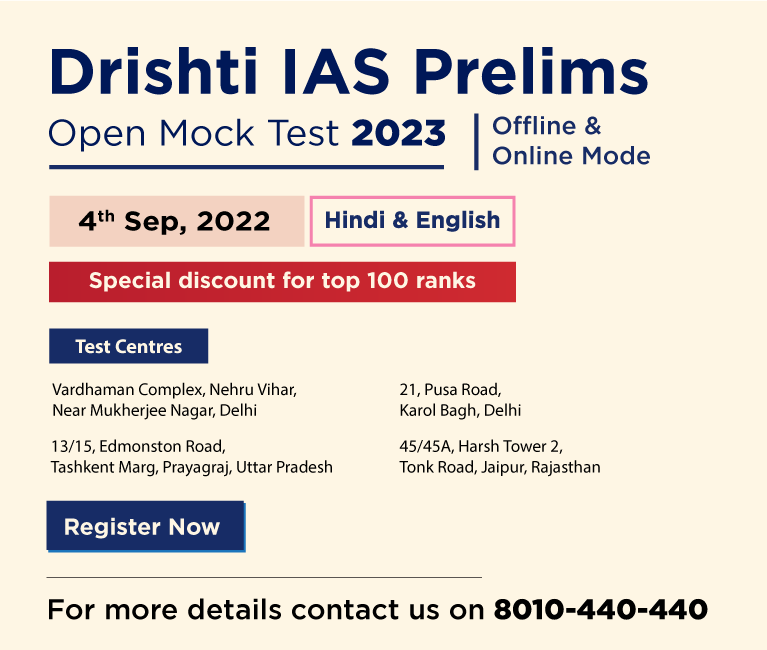
Ethics
Policing in India and Ethics
For Mains: Indian Police and Ethics, Various Issues with Ethical Policing in India
Why in News?
Former President Ram Nath Kovind gave the message that an 'ideal police system' indicates that the job of a police officer is full of responsibility and accountability.
Why are Police Ethics Different?
- Taking Moral Decisions:
- Life and liberty are fundamental moral values and are held to be so in all human societies, and the police routinely have to decide whether to arrest, i.e., whether or not to take away someone’s freedom, and at its extreme, sometimes they must decide whether or not to take away someone’s life.
- While making any moral decisions, the police have to consider a complex array of actions.
- They have to consider the goodness and badness of a person before they can consider whether their actions are wrong.
- For any action taken by a person, they have to see the motivation and intentions of the action and its consequences.
- May be Required to Face Danger or Hostility:
- The police may be required to face danger or hostility in order to do their duty, and predictably, in the course of their work, police officers are likely to experience a range of emotions including fear, anger, suspicion, excitement, and boredom to a far greater extent than people in other occupations.
- To act effectively as police, they must be able to respond to these emotions in the right way, which requires them to be emotionally intelligent.
What are the Various Issues with Ethical Policing in India?
- Politicization of the Police:
- The rule of law in India, the frame on which justice hangs, has been "undermined by the rule of politics".
- The major reasons for the politicisation of the police is the lack of a proper tenure policy for the posting of officers at different levels and the arbitrary transfers and postings that have been used for political interest.
- Politicians use transfer and suspension as weapons to tame police officers.
- These punitive measures affect the morale of the police and damage the chain of command within the organisation, thereby undermining the authority of those of their superiors who might be honest, competent, and fair-minded, but not sufficiently supportive or politically useful.
- Mindless Denigration of the Police:
- Bayley and the authors of Ethical Issues in Policing in India say that the rule of law is being replaced by the rule of politics, which is a cause of concern for establishing good governance in the country.
- According to them, mindless denigration of the police is irresponsible because it is counterproductive in terms of assisting those honest and competent police officers who are trying to renovate Indian police institutions.
- Corruption:
- Though corruption is prevalent in every part of the world, India ranks 85 out of 180 countries in the corruption perception index, 2021.
- The police department is not untouched by the corruption that is prevalent in the department at almost every level and in different forms.
- There have been instances where high ranking police officials were found to be indulged in corruption activities and there have also been instances where low ranking police officials were caught red-handed taking bribes.
- Custodial Death:
- The total number of custodial deaths in India increased from 1,940 in 2020-’21 to 2,544 in 2021-’22, according to government data.
- Uttar Pradesh has reported the highest number of custodial deaths among all states and Union Territories in the last two years.
- Use of Coercive Methods:
- The term police coercion can best be defined as when a police officer uses undue pressure or intimidation in an effort to secure a confession from a suspect to a crime.
- Police coercion can take many forms and police officers have been accused of using different types of coercion in an effort to get a suspect to confess.
What are the Various Related Suggestions?
- Recommendation of Shah Commission (1978):
- The Shah Commission of Inquiry in its report recommended that the government should seriously consider the viability and desirability of insulating the police from the politics of the country and employing them scrupulously on police duties that alone by law are intended to stop political interference.
- National Police Commission (1977):
-
To protect the police from outside influences and internal influence, the National Police Commission also offered a number of important suggestions.
-
The commission recommended that judicial inquiry should be made mandatory in case of Custodial rape, Death due to police firing and excessive use of force.
-
- Model Police Act:
- The Soli Sorabjee Committee was established to frame a Model Police Act.
- The committee submitted its recommendations in 2006, “to enable the police to operate as an efficient, effective, people-friendly, and responsive agency”.
- In general, the committee adhered to the precedent established by the Supreme Court in its Prakash Singh decision.
- The Government of India promised in Parliament that a Model Police Act would be introduced in the near future, which has not yet occurred.
Way Forward
- Protecting Human Rights:
- The National Human Rights Commission, in 1998, has said that in a democratic society, the police must be “low in authority and high in accountability.”
- Also, the police ethics and police institutions exist to serve the highest of moral purposes, to protect the rights to life, liberty, and property of citizens in a democratic polity. So, the protection of human rights is a core police function.
- Police Practice must Comply with Ethical Principles:
- The National Human Rights Commission in 1998 says that police practice must comply with carefully worked out ethical principles that appropriately balance the moral rights of victims with those of suspects.
- For example, the use of deadly force by police to protect citizens and themselves must be constrained by the ethical principles of necessity and proportionality.
- The National Human Rights Commission in 1998 says that police practice must comply with carefully worked out ethical principles that appropriately balance the moral rights of victims with those of suspects.
- Depoliticise the Police:
- The urgent need of the hour is to depoliticise the police and insulate it from extraneous pulls and pressures, as recommended by the National Police Commission, and re-emphasise the Supreme Court directives in Prakash Singh’s case.
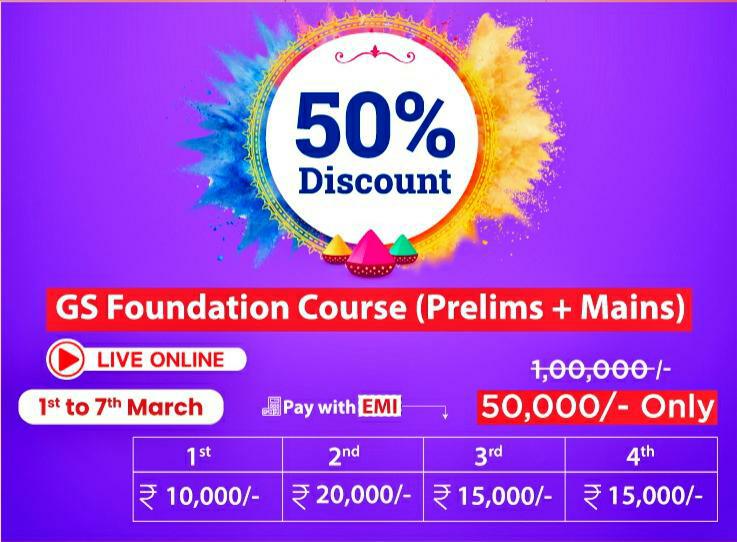
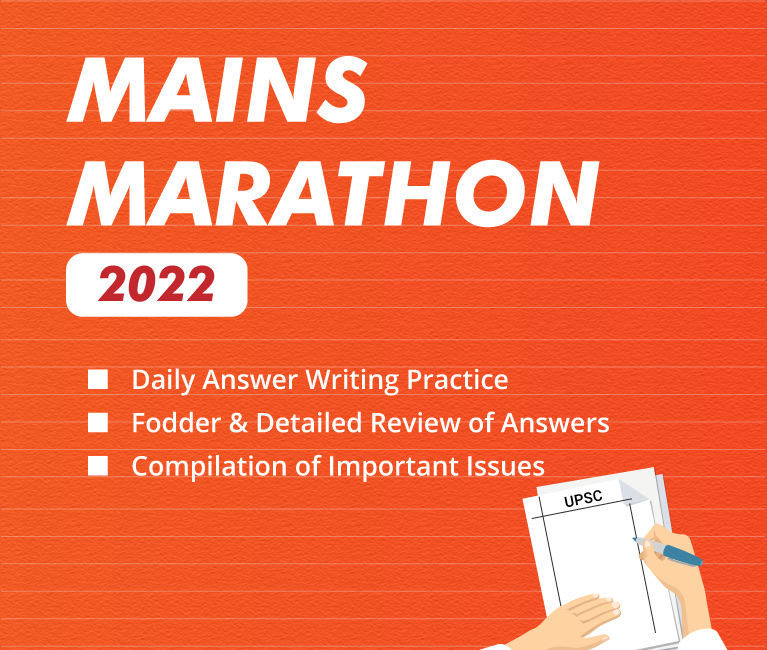
Indian Polity
Muslim Personal Law Case
For Prelims: Supreme Court, National Human Rights Commission (NHRC), the National Commission of Women (NCW), National Commission of Minorities
For Mains: Personal Laws in India and related issues, Issues Related to Women
Why in News?
Several petitions have been listed in the Supreme Court challenging the constitutional validity of the practice of polygamy and Nikah Halala allowed by Muslim Personal Law.
- A five-judge Constitution Bench has issued notices to the National Human Rights Commission (NHRC), the National Commission of Women (NCW) and the National Commission of Minorities.
- Earlier, the SC had stated the practice of divorce in Muslims through 'Talaq-e-Hasan' is not similar to triple talaq and the women also have an option of 'Khula'.
What are the Arguments of the Petitioners?
- Demand and Ground:
- The petitioners have demanded a ban on Polygamy and Nikah-Halala saying it renders Muslim wives extremely insecure, vulnerable and infringes their fundamental rights.
- They have also urged to declare Section 2 of the Muslim Personal Law (Shariat) Application Act unconstitutional on grounds of violation of Articles 14 (right to equality), 15 (discrimination on ground of religion) and 21 (right to life).
- Arguments against the Petition:
- The Constitution does not touch upon the personal laws and therefore the SC cannot examine the question of constitutional validity of the practices.
- They contend that even the apex court and various High Courts have on earlier occasions refused to interfere with practices sanctioned by personal law, an argument they advanced even in the triple talaq challenge matter too which the SC has already rejected.
What do we Know about Muslim Personal Law on Marriage?
- According to Sharia or the Muslim personal law, men are allowed to practice polygamy that is, they can have more than one wife at the same time, up to a total of four.
- 'Nikah halala' is a process in which a Muslim woman has to marry another person and get divorced from him before being allowed to marry her divorcee husband again.
- A Muslim man can divorce his wife by uttering Talaq once for three months. This practice is called Talaq-e-Hasan.
- "Triple talaq" allows a husband to divorce his wife by repeating the word "talaq" (divorce) three times in any form, including email or text message.
- In Islam, talaq and khula are two terms for divorce for men and women respectively. A man can part ways through 'talaq' while a woman can separate with her husband through 'Khula'.
In what ways was Muslim Law Applied in India?
- The Muslim Personal Law (Shariat) Application Act was passed in 1937 with the aim to formulate an Islamic law code for Indian Muslims.
- The British who were at this point in time governing India, were trying to ensure that Indians were ruled according to their own cultural norms.
- When it came to distinguishing between laws made for the Hindus and those for the Muslims, they laid out the statement that “clear proof of usage will outweigh the written text of the law” in the case of Hindus. For the Muslims on the other hand, the writings in the Quran would be of foremost importance.
- Since 1937 therefore, the Shariat Application Act mandates aspects of Muslim social life such as marriage, divorce, inheritance and family relations. The Act lays out that in matters of personal dispute the state shall not interfere.
What are the Personal Laws of Other Religions?
- The Hindu Succession Act of 1956 which lays out guidelines for property inheritance among Hindus, Buddhists, Jains and Sikhs.
- The Parsi Marriage and Divorce Act of 1936 lays out rules to be followed by the Parsis according to their religious traditions.
- The Hindu Marriage Act of 1955 had codified laws related to marriage among Hindus.
Is the Shariat Application Act in India Unchangeable?
- The applicability of the Shariat Act has been controversial over the years. There have been previous instances when the issue of protection of women’s rights as part of the broader fundamental rights came into conflict with religious rights.
- The most well-known among these is the Shah Bano case.
- In 1985, 62-year-old Shah Bano, filed a lawsuit seeking alimony from her former husband.
- The Supreme Court, in this case, had held up her right to alimony, but the judgment was vehemently opposed by the Islamic community who considered it to be going against the written rules in the Quran. The case triggered a controversy regarding the extent to which courts can interfere with personal/religious laws.
- The Shariat Application Act in India protects the application of Islamic laws in personal legal relationships, but the Act does not define the laws.
- It clearly states that in matters of personal disputes, the State shall not interfere and a religious authority would pass a declaration based on his interpretations of the Quran and the Hadith.
- Personal law does not fall within the definition of ‘laws’ under Article 13 of the Constitution. The validity of a personal law cannot be challenged on the basis of fundamental rights enshrined in the Constitution.
Way Forward
- The government and society will have to work hard to build trust, but more importantly, make common cause with social reformers rather than religious conservatives.
- Rather than an omnibus approach, the government could bring separate aspects such as marriage, adoption, succession and maintenance into a Uniform Civil Code (UCC) in stages.
- Need of the hour is the codification of all personal laws so that prejudices and stereotypes in every one of them would come to light and can be tested on the anvil of fundamental rights of the Constitution.
UPSC Civil Services Examination, Previous Year Questions (PYQs)
Prelims
Q. Which Article of the Constitution of India safeguards one’s right to marry the person of one’s choice? (2019)
(a) Article 19
(b) Article 21
(c) Article 25
(d) Article 29
Ans: (b)
Exp:
- The right to marry is a component of the right to life under Article 21 of the Constitution of India which states that “No person shall be deprived of his life and personal liberty except according to the procedure established by law”.
- In Lata Singh v. State of Uttar Pradesh 2006, the Supreme Court viewed the right to marry as a component of the right to life under Article 21 of Indian Constitution.
- Therefore, option (b) is the correct answer.
Mains
Q. Customs and traditions suppress reason leading to obscurantism. Do you agree? (2020)


Biodiversity & Environment
Cloud Seeding
For Prelims: Cloud Seeding and Types, Artificial Rain, Rainfall, Precipitation, Condensation.
For Mains: Application of Cloud Seeding and Concerns.
Why in News?
Recently, the United Arab Emirates (UAE) which is located in one of the hottest and driest regions on earth, has been leading the effort to seed clouds and increase precipitation, which remains at less than 100 millimetres a year on average.
- UAE combined shooting water-attracting salt flares with releasing salt nanoparticles, a newer technology, into the clouds to stimulate and accelerate the condensation process and hopefully produce droplets big enough to then fall as rain.
What is Cloud Seeding?
- About:
- Cloud seeding is the process of spreading either dry ice or more commonly, silver iodide aerosols, into the upper part of clouds to try to stimulate the precipitation process and form rain.
- Cloud seeding uses planes to spray clouds with chemicals to condense smaller particles into larger rain droplets.
- Cloud seeding increases rainfall rates by approximately 10% to 30% per year and cloud seeding operations cost much less than the desalination process.
- Cloud Seeding Methods:
- Hygroscopic Cloud Seeding:
- Disperses salts through flares or explosives in the lower portions of clouds. The salt grows in size as water joins with them.
- Static Cloud Seeding:
- It involves spreading a chemical like silver iodide into clouds. The silver iodide provides a crystal around which moisture can condense.
- The moisture is already present in the clouds, but silver iodide essentially makes rain clouds more effective at dispensing their water.
- Dynamic Cloud Seeding:
- It aims to boost vertical air currents, which encourages more water to pass through the clouds, translating into more rain.
- The process is considered more complex than static cloud seeding because it depends on a sequence of events working properly.
- Hygroscopic Cloud Seeding:
- Applications of Cloud Seeding:
- Agriculture:
- It creates rain, providing relief to drought-stricken areas.
- E.g.: ‘Project Varshadhari’ in Karnataka in 2017.
- It creates rain, providing relief to drought-stricken areas.
- Power Generation:
- Cloud seeding experiments have shown to augment production of hydroelectricity during the last 40 years in Tasmania, Australia.
- Water Pollution Control:
- Cloud seeding can help to maintain minimum summer flows of the rivers and dilute the impact of treated wastewater discharges from municipalities and industries.
- Fog Dispersal, Hail Suppression, and Cyclone Modification:
- During the winter the cloud seeding programme is used to increase the mountain snowpack so that additional runoff is received during the spring melt season.
- “Project Sky Water” of the U.S.A. in 1962 for weather modification through cloud seeding aimed at fog dispersal, hail suppression, and cyclone modification.
- Tackle Air Pollution:
- Cloud seeding can potentially be used to settle down toxic air pollutants through the rain.
- E.g.: Recently, the Central Pollution Control Board along with other researchers mulled the use of cloud seeding to tackle Delhi’s air pollution.
- Tourism:
- Cloud seeding can transform typically dry areas much more hospitable to enhance tourism.
- Agriculture:
What are the Challenges involved in Cloud Seeding?
- Potential Side-effects:
- The chemicals used in cloud seeding might be potentially harmful to plants, animals, and people, or the environment.
- Abnormal Weather Patterns:
- It might ultimately change climatic patterns on the planet. Places that normally receive moisture might start experiencing drought due to the artificial process of adding chemicals to the atmosphere to stimulate rain.
- Costly:
- It involves processes such as delivering chemicals to the sky and releasing them into the air by flare shots or airplanes, which involves huge costs and logistic preparation.
- Pollution:
- As artificial rain falls, seeding agents like silver iodide, dry ice or salt will also fall. Residual silver discovered in places near cloud-seeding projects is considered toxic. As for dry ice, it can also be a source of greenhouse gas that contributes to global warming, as it is basically carbon dioxide.
UPSC Civil Services Examination, Previous Year Questions (PYQs)
Q. In the context of which of the following do some scientists suggest the use of cirrus cloud thinning technique and the injection of sulphate aerosol into stratosphere? (2019)
(a) Creating the artificial rains in some regions
(b) Reducing the frequency and intensity of tropical cyclones
(c) Reducing the adverse effects of solar wind on the Earth
(d) Reducing the global warming
Ans: (d)
Exp:
- Cirrus cloud thinning is a kind of technology that involves thinning the wispy, elongated cirrus clouds of high altitudes. Cirrus clouds do not reflect a lot of solar radiation back into space, but as these are formed at high altitudes and cold temperatures, these clouds trap long-wave radiation and have a climate impact similar to greenhouse gases. Thinning cirrus clouds would be achieved by injecting ice nuclei (such as dust) into regions where there are cirrus clouds, making the ice crystals bigger and reducing the cirrus optical depth. Thinning the clouds would allow more heat to escape into space and thereby cool the planet.
- Stratospheric Aerosol Injection (SAI) is a technique that would involve spraying large quantities of inorganic particles (e.g., Sulphur dioxide) into the stratosphere to act as a reflective barrier against incoming sunlight, thus helping to reduce the global warming.
- Therefore, option (d) is the correct answer.


Social Justice
India Covid-19 Procurement: Challenges, Innovations, and Lessons
For Prelims: World Bank, Covid-19.
For Mains: Important International Institutions, Management of Covid-19.
Why in News?
Recently, the World Bank has released a report titled “India Covid-19 procurement: challenges, innovations, and lessons, saying India managed to get many things right in its management of the pandemic.
- The report takes a close look at the initiatives taken by the government of India (GoI) to ensure sustained supply of essential medical commodities during the critical initial phase of the Covid pandemic.
What are the Findings?
- Global:
- The health systems of most countries, including those rated high on the Global Health Security Index, faced new challenges in responding to the pandemic.
- To address the exceptional market uncertainties, several countries introduced innovations in public procurement to make processes responsive to the emergency context.
- Indian Initiatives:
- India managed efficient distribution of medical supplies nationwide, put in early restrictions and also created empowered inter-ministerial groups to achieve prompt procurement decisions during emergencies.
- India managed to scale up from 18 to over 2,500 testing laboratories rapidly within a span of four months and became ready to face future pandemics and health emergencies that pose serious challenges for global supply chains.
- India also created a conducive environment for growth of indigenous medical devices industry.
- Before the Covid-19 pandemic, India was mostly importing ventilators but 25 manufacturers including several newcomers came forward to produce ventilators with limited financial and infrastructure capacity.
- The government made use of several automobile and electrical manufacturing companies to handhold these new entrepreneurs to produce ventilators.
- Key Innovations in India:
- Adoption of a whole-of-government approach to stimulate local production helped to steeply reduce unit prices and dependency on global supplies.
- Introduction of accelerated tendering process and quality assurance protocols.
- Efficient supply chain management informed by computerised modeling that helped to project the number of cases and admissions, including oxygen and intensive care unit requirements among states based on epidemiological trends.
- Quickly moving the quality-assured Covid commodities to the government’s e-procurement site, which enabled states to start accessing these products at competitive prices without going through a tendering process.
What is the World Bank?
- About:
- It was created in 1944, as the International Bank for Reconstruction and Development (IBRD) along with the International Monetary Fund (IMF). The IBRD later became the World Bank.
- The World Bank Group is a unique global partnership of five institutions working for sustainable solutions that reduce poverty and build shared prosperity in developing countries.
- Members:
- It has 189 member countries.
- India is also a member country.
- Major reports:
- Ease of Doing Business (Stopped publishing recently).
- Human Capital Index.
- World Development Report.
- Its Five development institutions:
- International Bank for Reconstruction and Development (IBRD)
- International Development Association (IDA)
- International Finance Corporation (IFC).
- Multilateral Guarantee Agency (MIGA)
- International Centre for the Settlement of Investment Disputes (ICSID)
- India is not a member of this.
UPSC Civil Services Examination Previous Year Question (PYQ)
Prelims
Q1. Which one of the following issues the ‘Global Economic Prospects’ report periodically? (2015)
(a) The Asian Development Bank
(b) The European Bank for Reconstruction and Development
(c) The US Federal Reserve Bank
(d) The World Bank
Ans: (d)
Exp:
- ‘The Global Economic Prospects (GEP)’ is the World Bank’s semi-annual flagship publication on the state of the world economy.
- Other important reports published by the World Bank are Ease of Doing Business and World Development Report.
- Therefore, option (d) is the correct answer.
Q2. The Global Infrastructure Facility is a/an (2017)
(a) ASEAN initiative to upgrade infrastructure in Asia and financed by credit from the Asian Development Bank.
(b) World Bank collaboration that facilitates the preparation and structuring of complex infrastructure Public-Private Partnerships (PPPs) to enable mobilization of private sector and institutional investor capital.
(c) Collaboration among the major banks of the world working with the OECD and focused on expanding the set of infrastructure projects that have the potential to mobilize private investment.
(d) UNCTAD funded initiative that seeks to finance and facilitate infrastructure development in the world.
Ans: (b)
Q3. With reference to ‘IFC Masala Bonds’, sometimes seen in the news, which of the statements given below is/ are correct? (2016)
- The International Finance Corporation, which offers these bonds, is an arm of the World Bank.
- They are the rupee-denominated bonds and are a source of debt financing for the public and private sector.
Select the correct answer using the code given below:
(a) 1 only
(b) 2 only
(c) Both 1 and 2
(d) Neither 1 nor 2
Ans: (c)
Mains
Q. The World Bank and the IMF, collectively known as the Bretton Woods Institutions, are the two inter-governmental pillars supporting the structure of the world’s economic and financial order. Superficially, the World Bank and the IMF exhibit many common characteristics, yet their role, functions and mandate are distinctly different. Elucidate. (2013)


Science & Technology
Anti-Radiation Pills
For Prelims: Potassium Iodide, Thyroid Gland, WHO.
For mains: Anti-Radiation Pills.
Why in News?
With fears of a nuclear disaster at Ukraine’s Zaporizhzhia power plant growing, the European Union has decided to pre-emptively supply 5.5 million Anti-Radiation Pills to be distributed among residents in the vicinity.
What is a Radiation Emergency?
- These are unplanned or accidental events that create radio-nuclear hazard to humans and the environment.
- Such situations involve radiation exposure from a radioactive source and require prompt intervention to mitigate the threat.
- Dealing with such an emergency also involves the use of anti-radiation tablets.
What are Anti-Radiation Pills?
- Potassium Iodide (KI) tablets, or anti-radiation pills, are known to provide some protection in cases of radiation exposure.
- They contain non-radioactive iodine and can help block absorption, and subsequent concentration, of radioactive iodine in the thyroid gland.
How do these Pills Work?
- After a radiation leak, radioactive iodine floats through the air and then contaminates food, water and soil.
- Internal exposure, or irradiation, occurs when radioactive iodine enters the body and accumulates in the thyroid gland.
- The thyroid gland, which uses iodine to produce hormones to regulate the body’s metabolism, has no way of telling radioactive from non-radioactive iodine.
- Potassium iodide (KI) tablets rely on this to achieve ‘thyroid blocking’.
- KI pills taken a few hours before or soon after radiation exposure ensure that non-radioactive iodine in the medicine is absorbed quickly to make the thyroid “full”.
- The thyroid becomes full and cannot absorb any more iodine – either stable or radioactive – for the next 24 hours.
- But KI pills are preventive only and cannot reverse any damage done by radiation to the thyroid gland.
- Once thyroid gland absorbs radioactive iodine, those exposed are at a high risk of developing thyroid cancer.
Is the method Fool-Proof?
- Anti-radiation pills do not provide 100% protection.
- The effectiveness of KI depends on how much radioactive iodine gets into the body and how quickly it is absorbed in the body.
- Also, the pills are not meant for everybody. They are recommended for people under 40 years of age.


Important Facts For Prelims
International Whale Shark Day
Why in News?
Recently, Delhi-based non-profit, Wildlife Trust of India (WTI) launched ‘Save the Whale Shark Campaign’ along Karnataka, Kerala and Lakshadweep in Mangaluru.
- August 30, 2022 is International Whale Shark Day, this year’s theme is “The Future of Sharks: Guardians of Our Seas.”
What is the Save the Whale Campaign?
- The campaign will run along coastal Karnataka, Kerala and the Lakshadweep islands in collaboration with the Forest and Fisheries Departments of Karnataka, Kerala and the Lakshadweep administration.
- Further, the campaign aims to reduce accidental entanglements in fishing nets with fishermen releasing whale shark.
- A mobile application has been developed to record whale shark spotting and rescues for further conservation action
What are the Key Points related to Whale Shark?
- About:
- The whale shark (Rhincodon typus) is the largest fish on Earth and a keystone species in marine ecosystems.
- It can grow to a length of approximately 18 metres and weigh as much as 21 tonnes.
- They are ovoviviparous – meaning they give birth to live young rather than lay eggs – and can reach sexual maturity at around 10 years old.
- The whale shark (Rhincodon typus) is the largest fish on Earth and a keystone species in marine ecosystems.
- Habitat:
- Whale sharks are tropical ocean dwellers that feed on fish, squid and other small creatures.
- India:
- The whale shark is distributed all along the Indian coast.
- However, the largest whale shark aggregation is along the Gujarat coast.
- Beyond Gujrat:
- WTI, with the support of IUCN had conducted a survey along the west coast (excluding Gujarat) during 2012-13 and found that the highest number of Whale Shark sightings (after Gujarat coast) were near the waters of Lakshadweep.
- Also, the Whale shark landings and stranding are largely reported from Kerala.
- WTI, with the support of IUCN had conducted a survey along the west coast (excluding Gujarat) during 2012-13 and found that the highest number of Whale Shark sightings (after Gujarat coast) were near the waters of Lakshadweep.
- Status:
- The Wild Life (Protection) Act, 1972: Schedule I
- International Union for Conservation of Nature (IUCN) Red List: Endangered.
- IUCN Green Status Assessment: Largely Depleted.
- Threat:
- Accidental entanglement:
- The main threat to these plankton feeders is accidental entanglement in fishing nets.
- Most fishers know that their nets can entrap a whale shark.
- Despite that they trawl the ocean floor to intend to catch grouper, mackerel, shrimp and lobster.
- There is always a possibility that they accidentally catch a whale shark too.
- Rising Plastic Level:
- The rising level of plastic debris in oceans is a large-scale environmental problem with widespread impact.
- Owing to their feeding strategies, this filter-feeding megafauna is particularly susceptible.
- The rising level of plastic debris in oceans is a large-scale environmental problem with widespread impact.
- Accidental entanglement:
- Protection:
- To curb such mortality is to ensure the release of the entangled whale sharks from the fishing net without any delay.
- For this, the primary target group, which is the fishers needs to be sensitised.
- To curb such mortality is to ensure the release of the entangled whale sharks from the fishing net without any delay.
- Initiatives:
- WTI has been running a project in Gujarat for the last 20 years which has resulted in fisher folk releasing 852 whale sharks in the Arabian Sea.
- Goal:
- The main goal of this project is to reduce and eradicate whale shark death in the incidental catch in fishing nets by the voluntary release of the whale shark.
- This initiative targets the marine fishers along these two states and the island of Lakshadweep.
What is IUCN Green Status Assessment?
- The IUCN Green Status classifies species into nine Species Recovery Categories, indicating the extent to which species are depleted or recovered compared to their historical population levels.
- Each Green Status assessment measures the impact of past conservation on a species, a species’ dependence on continuing support, how much a species stands to gain from conservation action within the next ten years, and the potential for it to recover over the next century.
UPSC Civil Services Examination Previous Year Question (PYQ)
Prelims
Q. Among the following, which one lays eggs and does not produce young ones directly? (2008)
(a) Echidna
(b) Kangaroo
(c) Porcupine
(d) Whale
Ans: (a)
Exp:
- Echidnas, sometimes known as spiny anteaters, belong to the family Tachyglossidae in the monotreme order of egg-laying mammals.
- The four extant species of Echidnas and the platypus are the only living mammals that lay eggs and the only surviving members of the order Monotremata.
- Echidnas evolved between 20 and 50 million years ago, descending from a platypus-like monotreme, which was aquatic, but echidnas adapted to life on land. Therefore, option (a) is the correct answer


Important Facts For Prelims
Indian Navy Ensign
Why in News?
The Prime Minister will unveil the new Ensign (flag) of the Indian Navy in Kochi to mark the launch of India's first aircraft carrier, INS Vikrant.
What is Ensign?
- About:
- An Ensign is a national flag which is displayed on ships and aircraft, often with the special insignia of a branch or unit of the armed forces.
- Present Ensign of Indian Navy:
- The present ensign carries the Saint George’s Cross with the Tricolour in the canton (top left corner of flag).
What was the Need for Changing Ensign?
- Long Pending Demand:
- There had been a long pending demand for a change in the naval ensign.
- The original suggestion for change came from Vice Admiral VEC Barboza who retired from the Navy as the Flag Officer Commanding-in-Chief Western Naval Command.
- There had been a long pending demand for a change in the naval ensign.
- To Replace the Colonial Past:
- The present ensign is essentially a successor to the pre-Independence ensign of the Indian Navy which had the red George’s Cross on a white background with the Union Jack of the United Kingdom on the top left corner.
- After Independence, on August 15, 1947, the Indian defence forces continued with the British colonial flags and badges and it was only on Jan 26, 1950 that a changeover to Indianised pattern was made.
- The Navy crest and flag were changed but the only difference made to the flag was that the Union Jack was replaced with the Tricolour, and George’s Cross was retained.
How Many Times Has the Naval Ensign Changed?
- The change in naval ensign was made in 2001 when the George’s Cross was replaced with the naval crest in the middle of the white flag while the Tricolour retained its place on the top left corner.
- Further, in 2004, the ensign was again changed back to the Red George’s Cross as there were complaints that the new flag was indistinguishable because the blue of the Navy crest merged with the skies and the sea.
- A change was made in the flag and the red George’s Cross now had the state emblem derived from the Lion Capital of Ashoka in the middle.
- In 2014, yet another change was made when the words ‘Satyamev Jayate’ were included on the flag below the Ashoka emblem in the Devanagri script.
What is Saint George's cross?
- About:
- The red cross on a white background is known as the Saint George’s Cross and is named after a Christian Warrior Saint who is believed to have been a crusader during the third crusade.
- This cross also serves as the flag of England which is a constituent of the United Kingdom.
- It was adopted by England and the city of London in 1190 to identify English ships entering the Mediterranean.
- Most Commonwealth countries retained the Red George’s Cross at time of their independence, but several have done away with it on their respective naval ensigns over the years.
- Prominent among them are Australia, New Zealand and Canada.

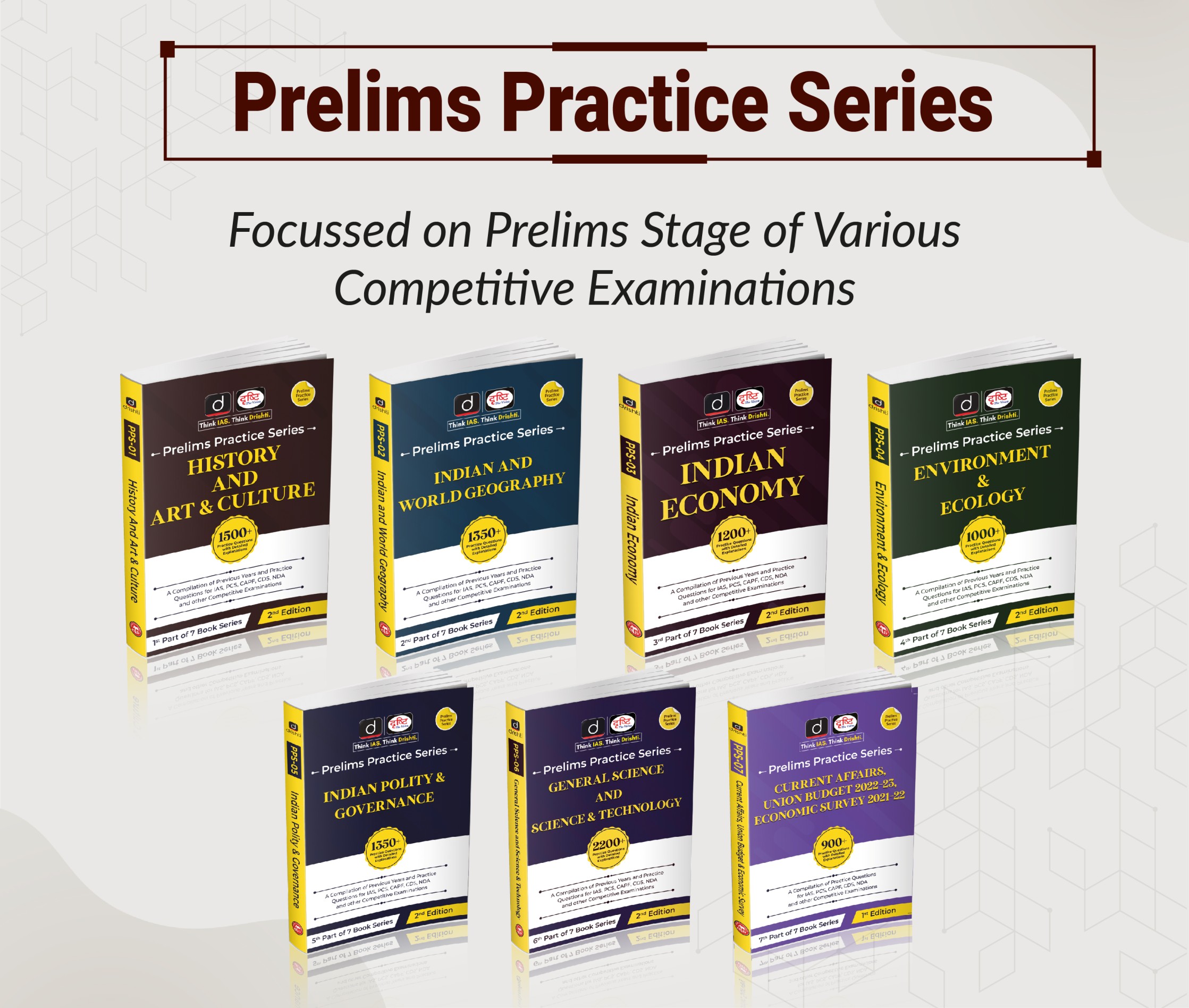
Important Facts For Prelims
Cyber Security Exercise “Synergy”
Why in News?
Recently, Computer Emergency Response Team - India (CERT-In) successfully designed & conducted the Cyber Security Exercise “Synergy” for 13 Countries as part of the International Counter Ransomware Initiative.
- The exercise was conducted as part of the International Counter Ransomware Initiative- Resilience Working Group which is being led by India under the leadership of National Security Council Secretariat (NSCS).
What is CERT-IN?
- Computer Emergency Response Team - India is an organisation of the Ministry of Electronics and Information Technology with the objective of securing Indian cyberspace.
- It is a nodal agency which deals with cybersecurity threats like hacking and phishing.
- It collects, analyses and disseminates information on cyber incidents, and also issues alert on cybersecurity incidents.
- CERT-IN provides Incident Prevention and Response Services as well as Security Quality Management Services.
What is Synergy?
- About:
- Synergy is a Cyber Security Exercise which is successfully designed & conducted by CERT-In in collaboration with Cyber Security Agency of Singapore (CSA).
- The exercise scenario was derived from real life cyber incidents, in which a domestic level (limited impact) ransomware incident escalates to a global cyber security crisis.
- Each State participated as a National Crisis Management Team having composition from different government agencies including National CERTs/CSIRTs, Law Enforcement Agencies (LEA), Communication & IT/ICT Ministry and Security agencies.
- Objectives:
- To Assess, Share and Improve strategies and practices among Member-States to build network resiliency against ransomware & cyber extortion attacks.
- Theme:
- Building Network Resiliency to Counter Ransomware Attacks.
What is Ransomware?
- Ransomware is a malware designed to deny a user or organization access to files on their computer.
- By encrypting these files and demanding a ransom payment for the decryption key, cyber attackers place organizations in a position where paying the ransom is the easiest and cheapest way to regain access to their files.
- Some variants have added additional functionality – such as data theft – to provide further incentive for ransomware victims to pay the ransom.
What are Government Initiatives for Cyber Security?



